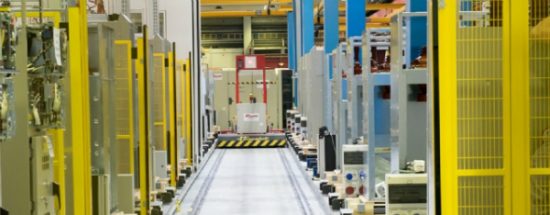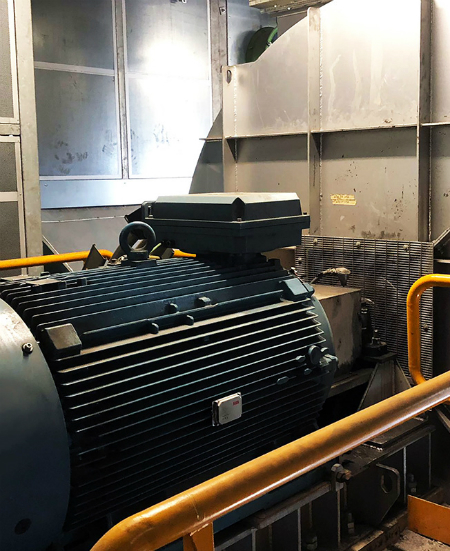
The industrial sector is one of the largest energy consumers in the world. In 2018, the industrial sector accounted for about 32 per cent of the total energy consumption in the U.S., with chemical, refining, and mining industries leading the way.
However, with rising demand, the cost of energy is also going up. At the same time, globalization has led to intense competition. In other words, lowering energy consumption and streamlining production has become critical for survival.
In a bid to save energy, most factories are investing in a variety of technologies, with the Industrial Internet of Things (IIoT) becoming more popular every day.
IIoT refers to the use of smart devices like sensors, valves, motors, time-relays, switches, meters and actuators to increase the efficiency of industrial processes.
It is also known as Industry 4.0, which is essentially a term for smart factories. The network of intelligent devices collects and analyzes vast amounts of data to make processes more efficient while reducing downtime.
Most factories have a few primary energy consumption areas to get maximum savings. They usually include processes and machines required for maintaining pressure, and move objects or fluids (motion), as well as HVAC systems.
Let’s see how IIoT can help factories and manufacturing plants conserve energy.
Pressure (pressure valves)
Various manufacturing processes are required to maintain a particular level of pressure to produce the desired results. Failure to maintain this pressure leads not only to downtime and safety risks, but also irrecoverable energy losses.
Pressure relief valves and steam traps are usually used to maintain pressure. However, these devices can’t monitor themselves or sense small changes in the pressure. This is where IIoT-enabled pressure sensors and smart monitors come in handy.
These devices can collect vast amounts of data to find various patterns. With analytical software, plant managers will be able to identify how much energy gets consumed and what measures can be taken to save it.
As plant managers will be able to find any issues related to these valves in real-time, energy wastage can be stopped instantly. Processes or equipment can also be upgraded based on the analysis of past data.
Movement (motors)
Motors are perhaps the largest source of electricity usage in a manufacturing plant. Electric motors are required for hydraulic and for moving fluids through pipes. However, most electric motors pose a unique problem.

Usually, electric motors run at 50 to 99 per cent of their rated load capacity. Over time, however, most motors run at less than 50 per cent of their rated capacity, resulting in overheating and under-loading. This, in turn, leads to higher energy consumption. In other words, oversized motors often lead to significant energy losses, while undersized motors frequently fail to perform.
With the help of smart sensors and meters, plant managers can analyze the performance of a motor in real-time. This is a more reliable and quicker process compared to the traditional slip tests and electrical tests. The data collected with the help of smart sensors can help demystify energy consumption patterns, make energy-optimization recommendations, and predict energy demand during peak periods.
Further, the IIoT-based system can also send real-time alerts of a potential overheating or under-loaded motor. Thus, unplanned downtime can be avoided efficiently.
HVAC systems
HVAC (Heating, Ventilation, and Air Conditioning) systems also consume a large chunk of energy in most factories. Just like electric motors, using oversized air conditioners leads to higher energy costs, while using undersized air conditioners provide inadequate cooling. IIoT can bring operational visibility into HVAC systems, making them highly energy-efficient and productive.
For example, with the help of a wireless network of motion sensors, users can monitor the footfall in a room or a workshop floor, and adjust the cooling or heating accordingly. So, when a room or workshop floor has low occupancy, the IIoT-enabled HVAC system will lower the power usage of cooling.
In a more advanced system, AI technologies can be used to control the heating, ventilation, and cooling within the factory premises. Data from third-party resources such as weather feeds can also be integrated to get early warnings for a sudden spike or drop in the temperature. A smart HVAC system will adjust its energy consumption accordingly.
These systems also allow a vast amount of data to be collected in real time. A careful analysis of this data will help identify energy usage patterns, implement continuous optimization, and improve preventive maintenance.
The system sends early warnings if it detects abnormal energy consumption or any other irregularity in the HVAC system, helping to prevent catastrophic accidents or unpredictable downtimes.
Most IIoT-based HVAC systems are self-reliant. They will figure out almost all energy-efficient configurations automatically once the initial parameters have been set.
Going beyond energy savings
Energy saving is just one of the many benefits of IIoT. It helps factories control and optimize every aspect of their operations, ranging from conveyor belts and air conditioners to boilers and Uninterruptible Power Supply (USP) systems.
The ultimate goal of IIoT is to build smart factories characterized by complete automation and excellent connectivity. The future looks bright for IIoT and its allied technologies like AI, machine learning, advanced robotics, cloud computing, 3D printing and Big Data analytics. According to Capgemini, smart factories can add US$500 billion to US$1.5 trillion in value-added to the global economy in five years.
IIoT can help address the three principal areas of energy consumption: pressure valves, electric motors and HVAC systems. But most importantly, adopting IIoT will help pave the way to transform a plant into a smart factory. Smart factories not only save energy, but also optimize production and maintenance. So how soon is too soon to jump on the IIoT wagon?